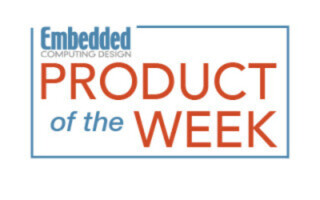Top 5 Microcontroller Development Boards of 2021
January 06, 2022
Blog

The microcontroller development board is the core component of an embedded or IoT application, thus it becomes significantly important to choose the board before designing the application. As there were many launches of development boards in 2021, it may be a difficult decision to choose the one suitable for your target application.
Selecting the top 5 development boards of 2021 is nearly an impossible task because there are a lot of parameters to analyze and study. However, studying the parameters like popularity, architectural design, functional components, and the scope of application, I have consolidated a list of the top 5 microcontroller development boards of 2021.
1. Raspberry Pi Pico
Raspberry Pi Pico is the first in-house MCU development board launched by Raspberry Pi Foundation in January 2021. It features a cost-effective RP2040 SoC capable of running at a high frequency of 125-133 Mhz. Hence, it can accommodate high computing applications which involve machine learning and data collection.

Credit: Raspberry Pi
The $4 USD cost of the board made it a popular choice in the maker’s community, and it still stands out from the majority of the development boards. You can check out the product page of Raspberry Pi Pico for detailed information.
2. Arduino Nicla Sense ME
Arduino collaborates with Bosch Sensortec to design this development board featuring a smart motion sensor and 4DoF environmental sensor. Nicla Sense ME was launched in September 2021 with AI capabilities making it suitable for the B2B industrial products.

Credit: Arduino
Nicla Sense is so far the smallest board from Arduino. You can check out the product page of Arduino Nicla Sense ME for more information.
3. SparkFun MicroMod Teensy
SparkFun MicroMod Teensy is not exactly a microcontroller board. It is a micromod card with M.2 connector compatible with various carrier boards by SparkFun. This type of an ecosystem comes with a provision of interchangeable processors and carrier boards. This allows engineers to develop rapid prototypes for testing with multiple options of carrier boards.

Credit: SparkFun
You can check out the detailed blog for more information on this modular interfacing ecosystem featuring the MicroMod Teensy card or you can visit the product page.
4. Seeed XIAO BLE nRF52840 Sense
Seeed Studio’s XIAO BLE nRF52840 Sense is a compact microcontroller board dedicated to IoT and AI applications. It features Bluetooth LE and is compatible with machine learning frameworks like TinyML and TensorFlow Lite. It also comes with an onboard antenna, 6 Dof IMU and a microphone. This board makes it to the top 5 list because it is a consolidation of various features in such a small form factor. Hence, it can be a great choice for wearable devices.

Credit: Seeed Studio
You can visit the product of page of Seeed XIAO BLE nRF52840 Sense for detailed information.
5. Arduino Nano RP2040 Connect
Arduino Nano RP2040 Connect had to make this list, it is the first collaborative product from Arduino and Raspberry Pi. It combines the processing power of RP2040 SoC from Raspberry Pi and the popular Arduino Nano features. It also comes with many onboard sensors and the popular u-blox NINA-W102 radio module for flexible connectivity options.

Credit: Arduino
Apart from featuring a wide range of functionalities on a single board, Arduino Nano RP2040 Connect is compatible with Arduno Cloud, making it one of the most dynamic boards of 2021. You can visit product page of Arduino Nano RP2040 Connect for more information.





